
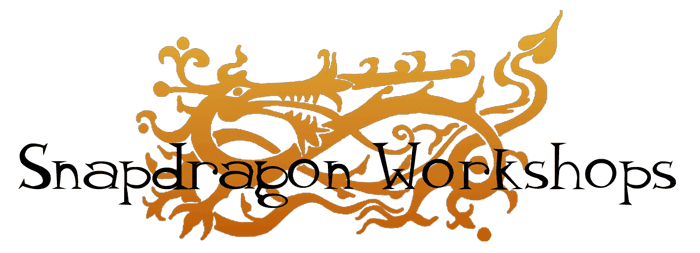

Education - Inspiration - Enjoyment
...plant the seeds and watch them grow...
"Fossil Plants and Food Webs": three days at The Eden Project
exploring the evolution of the plant kingdom through drop-in art-meets-science sessions for family groups and people of all ages.
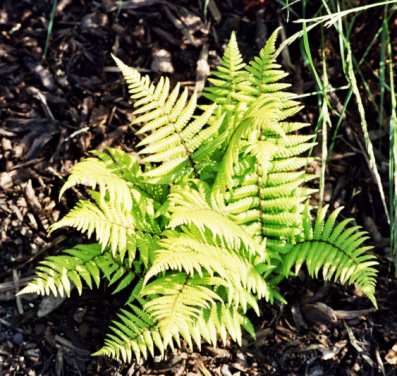

Purpose of the event:
Through creating a purpose-built exhibition of pictures, text, and specimens we provided an environment where visitors to The Eden Project had the opportunity to learn about the evolution of the plant kingdom throughout geological time and consider the fundamental importance of plants to food webs past and present.
Our exhibition (which filled up the whole of the "Partnership Tent", at the bottom of the picture on the right) invited full access to information for all learning styles and abilities. We always do our best to include everybody by using a wide variety of equipment, information and specimens that stimulate as many of the five senses as possible (risk assessments preclude tasting!).
We provided a fun, friendly and relaxed atmosphere which generated a positive attitude towards the plant kingdom, along with a closer understanding of the shapes, colours, textures and history of plants through creativity.
Risk assessments were undertaken for all of the activities.



We provided:
Real fossil material for "Object Handling': this included various fossilised botanical specimens (fossil leaves, fossil wood etc) as well as associated material like coprolites (fossil droppings), gastroliths (stomach stones) and fossil teeth.
Plants of geological resonance to study ("living fossils"): i.e. Norfolk Island Pine, Metasequoia, Ginkgo, Monkey Puzzle, Tree Fern, Liverworts, Cycad, and Horsetails - plant species that have been around, unchanged, for hundreds of millions of years.
Osteological specimens so that teeth, jaws and skulls could be studied to compare herbivores with carnivores.
Many reference books to look at, posters to read and handouts to take home.
Leaf slides, pressed leaves and other plant segments for close study and observation of plant structure.
Learning through creativity with a diverse art workshop observing the living fossils and extinct forms through shape, colour and texture then creating and drawing many items all linked in with the displays, for example food web mobiles.
Equally importantly, we were available to talk to the visitors to explain the fossils, plants and theories and answer any of their questions.
A few samples of the exhibition - plants, fossils and posters:




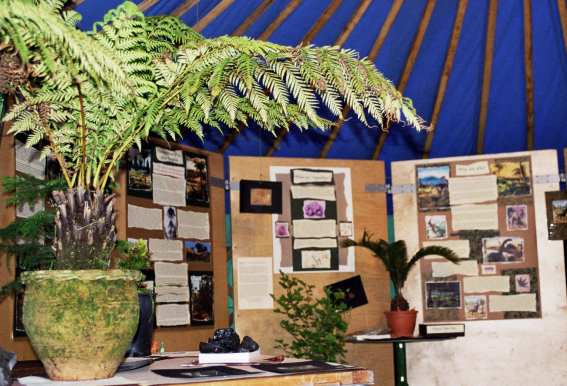

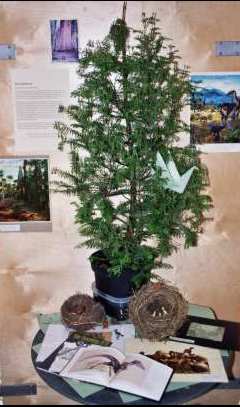

Objectives:
We hoped to impress upon visitors that the plant world we see around us today is merely a snapshot in time and not the "norm". Plants have been evolving for the last two billion years to bring us to this point in time and changes are still occurring around us today.
We discussed the processes of fossilisation and evolution and the concept of geological time.
We explained how many different major plant groups have had dominance over the earth at various times and how this has driven the evolution of the animal kingdom.
We paid particular attention to the dynamic nature of food webs, looking at different food webs at different times in prehistory and impressed upon visitors the fundamental importance of the plant kingdom to all animals.
We helped visitors to look at plants in depth with interest and fresh eyes. They should have left after their session with a greater sense of respect for plants. Plants played a vital role in our own evolutionary history, and continue to be vital to our very existence today.
Carnivore? Herbivore? or Omnivore? Who is who and what's the difference? We specifically looked at food webs both in the seas and on land to see how fundamental plants are to the whole food web whether 200 Million years ago, 750000 years ago or today.
All the above subjects are extremely relevant to the National Curriculum for key stages one, two, three, four and five and are particularly relevant to art and science.
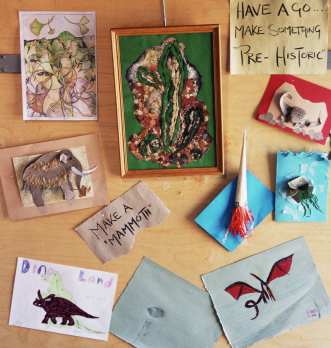
 Processes:
Processes:
The room was set out as a story of the evolution of plants, explaining how our living Earth has developed over billions of years and how the living and interrelated landscape of plants and animals have evolved and changed with time. We looked at different environments and ecosystems that have been formed as a result of the plant kingdom developing and diversifying and reflected upon changes occurring around us today.
This story was clearly exhibited on the information boards and posters we produced, highlighted with appropriate art work and illustrated with various fossils and plant specimens with a backdrop of sounds from a Jurassic rainforest. There was plenty of information for both children and adults, with the children's information laid out at an appropriate height on the tables with full access for wheel chair users too.
There were handouts of appropriate information for an older audience and one for younger visitors. We also provided a quiz sheet, word-search and colouring-in sheets of various food webs to be collected on the way round. At the end of the information boards there was a chance for all visitors, whatever their age, to indulge in some creative artwork.

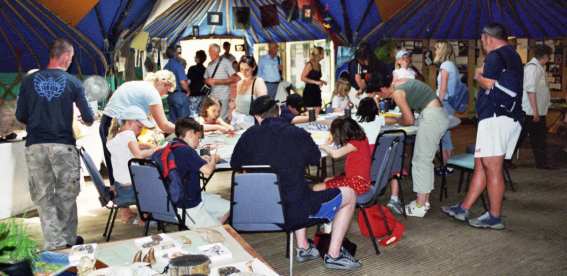

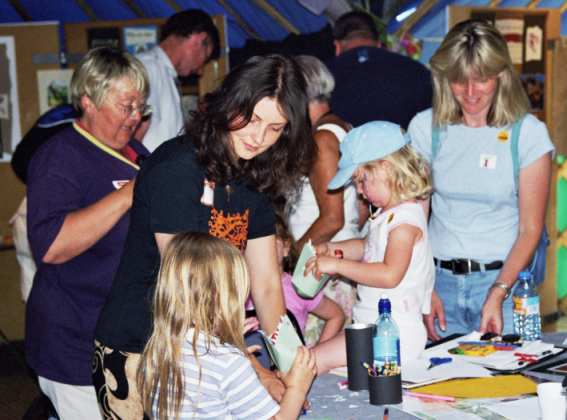
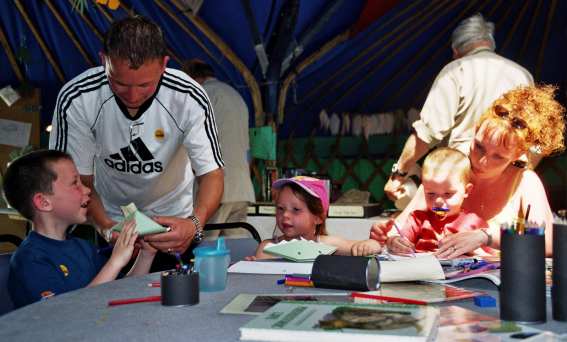

Creative Activities:
We provided opportunities to explore all of the themes discussed through creative learning which young people and family groups particularly enjoy:
Food-Web Fun: visitors could make their own food web mobiles for specific points in geological time.
Masks and Meals: they could choose their favourite prehistoric animal and make a face mask out of materials provided, followed by making up a paper plate of appropriate paper food - are you a carnivore or a herbivore?
Drawing down the past: Visitors could draw their own studies and interpretations of the plants, or draw prehistoric landscapes in which food webs are being enacted.
Drawing plants with plants: They could also sketch or draw in charcoal studies of the plant fossils, while asking themselves what is charcoal made of - its surprising how may children do not know.
Amber slides: Stained glass window effect using coloured acetate to create your own lump of Amber and choose what insect has been encased.
Leaf slides: visitors could make their own leaf slides by looking at the different shapes the fossil plants and leaves create.
Who Ate Who?: Three 'colouring-in' sheets depicting three very different food chains. The object of these sheets is work out who ate who then link the names of the animals and plants with lines to create a web effect - and colour the picture in.
The Evolution of Plants word search: 32 words to find and some plants to colour in.
Handling Prehistory : A chance to look at some fossilised plants close up including Ferns, Horsetails and Ginkgoes. We even had some Gastroliths (stones that were swallowed by large herbivores to aid digestion) and Coprolites (fossilised droppings!). The handling of these specimens brought all of the text, pictures, handouts and concepts into focus.
The aim of these activities was to give visitors a choice of the following:
Reading and learning about the evolution of plant and animal life and discovering the vital role of the plant kingdom throughout the history of life on Earth.
Touching and holding fossil plants and other specimens that are up to 300 million years old.
Studying the real live examples of species that have been around for over 200 million years.
Creating their own piece of artwork to take home with them.
Or just joining us for a chat to discuss any queries they may have.
Here are some of the fantastic works of art that were created as a result of the workshop:
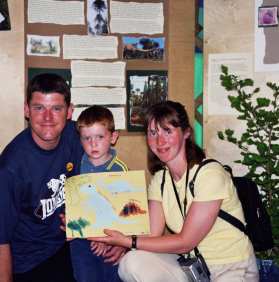

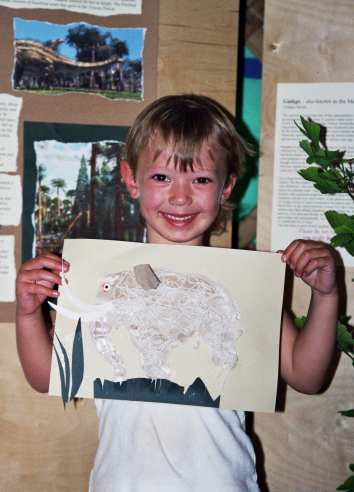


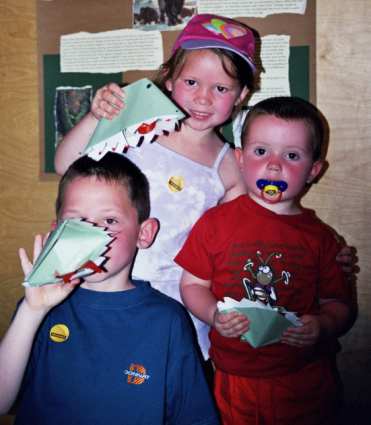





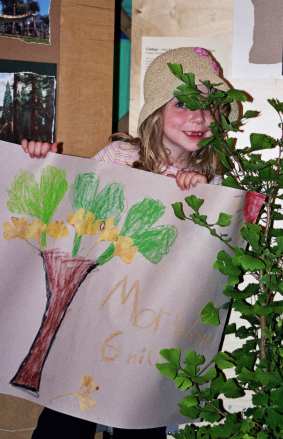

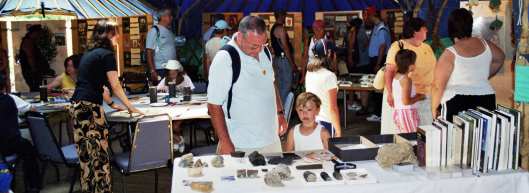
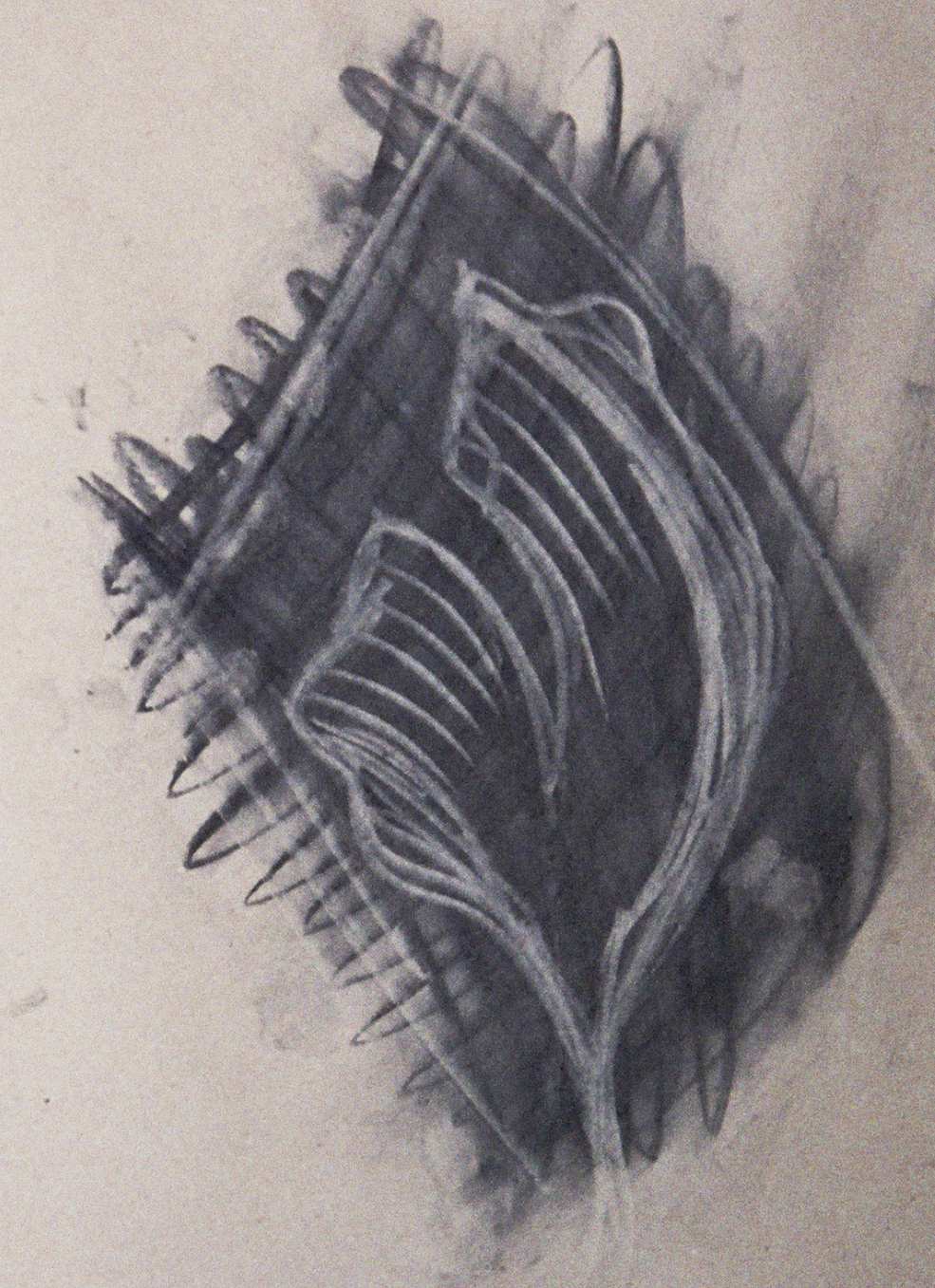
 With thanks to (in no particular order):
John Clark; Kate and James Reddaway; Morwenna and Jocelyn Trevena; John, Rose and Daniel; Rebecca Nudd; Zoe, Ben and Hayley Jones;
Rob, Jaqui and Alanna Roussel; Nathan, Amy, Jason, Julie and Sam Plummer; Alisha and Benjamin Palmer; Lucy; Chris and Chris.
With thanks to (in no particular order):
John Clark; Kate and James Reddaway; Morwenna and Jocelyn Trevena; John, Rose and Daniel; Rebecca Nudd; Zoe, Ben and Hayley Jones;
Rob, Jaqui and Alanna Roussel; Nathan, Amy, Jason, Julie and Sam Plummer; Alisha and Benjamin Palmer; Lucy; Chris and Chris.
At least a couple of hundred people visited the exhibition each day and many family groups and individuals stopped to talk about the subject matter and took up the opportunity to be creative and make something.
We really enjoyed our time at the Eden Project delivering this event, and we are looking forward to working there again.
We would be happy to deliver this workshop, or one like it, to other localities whether garden events, geological or other science events, museums or directly to schools. Do contact us if you are interested.


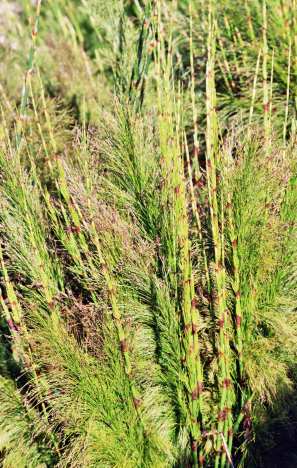









back to the top of the page
Snapdragonworkshops Home Page

To contact us, please email gemma@snapdragonworkshops.com or call 079777 34344.




















 Processes:
Processes:




















 With thanks to (in no particular order):
John Clark; Kate and James Reddaway; Morwenna and Jocelyn Trevena; John, Rose and Daniel; Rebecca Nudd; Zoe, Ben and Hayley Jones;
Rob, Jaqui and Alanna Roussel; Nathan, Amy, Jason, Julie and Sam Plummer; Alisha and Benjamin Palmer; Lucy; Chris and Chris.
With thanks to (in no particular order):
John Clark; Kate and James Reddaway; Morwenna and Jocelyn Trevena; John, Rose and Daniel; Rebecca Nudd; Zoe, Ben and Hayley Jones;
Rob, Jaqui and Alanna Roussel; Nathan, Amy, Jason, Julie and Sam Plummer; Alisha and Benjamin Palmer; Lucy; Chris and Chris.












